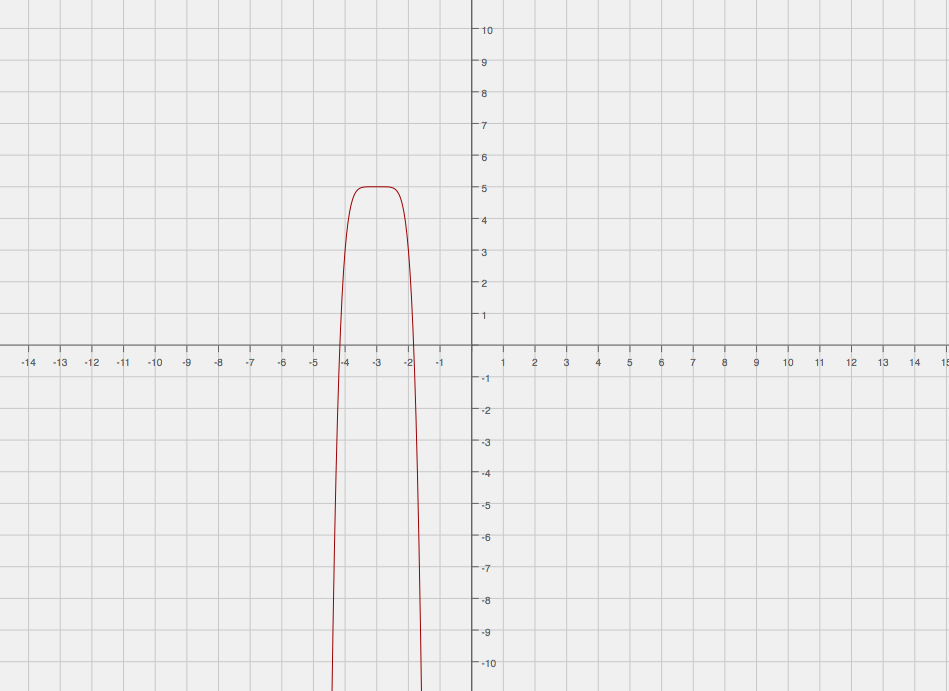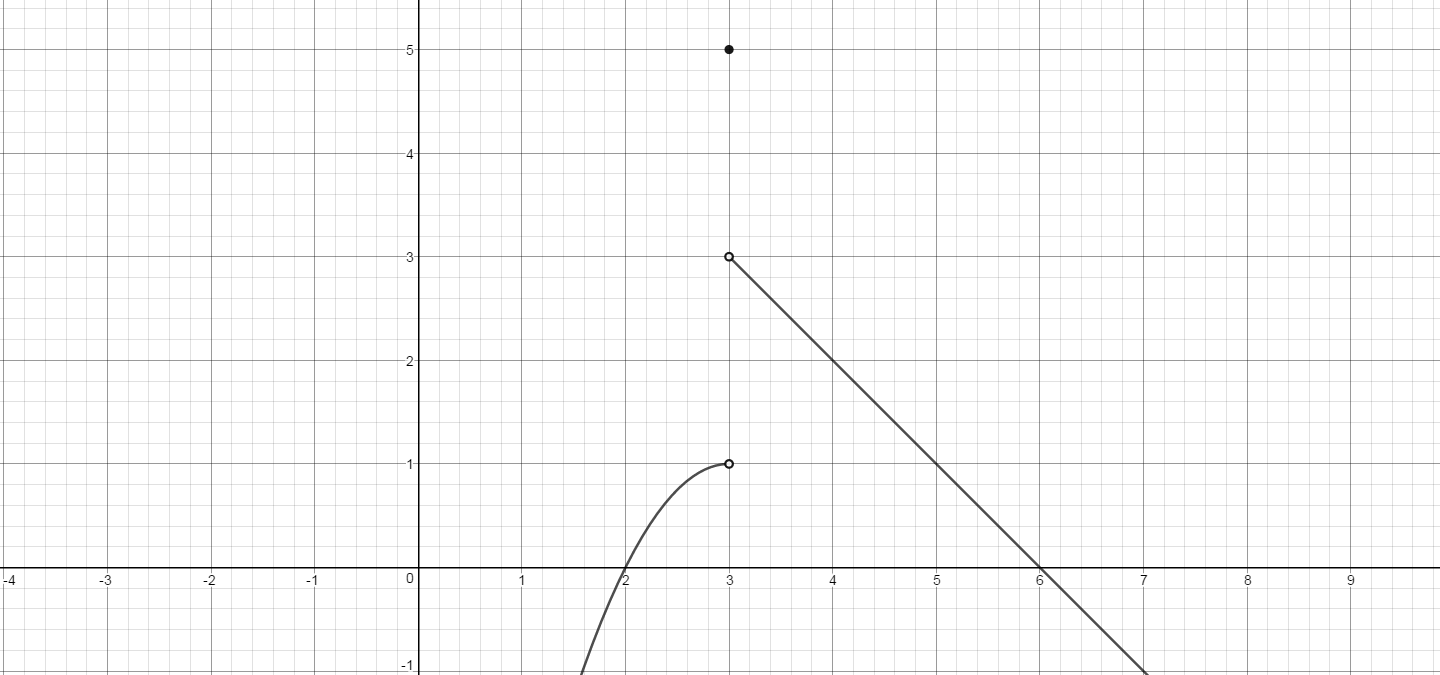How do you sketch the graph that satisfies f'(x)>0 when x<3, f'(x)<0 when x>3#, and f(3)=5?
2 Answers
We know the following.
•The function is increasing in the interval
•The function is decreasing in the interval
•The function passes through the point
Considering the function is exclusively increasing in the interval
Any polynomial function of the form
The following is a graph of

Hopefully this helps!
Here are a couple more possibilities.
Explanation:
HSBC244 has shown a nice graph that has derivative
Here are couple of graphs of functions that satisfy the requirements, but are not differentiable at
graph{y = -abs(x-3)+5 [-14, 22.05, -6.16, 11.85]}
graph{-(x-3)^(2/3) +5 [-5.98, 14.025, -2.15, 7.844]}
For the unconventional here is a possible graph:

(Graphed using desmos.com)


